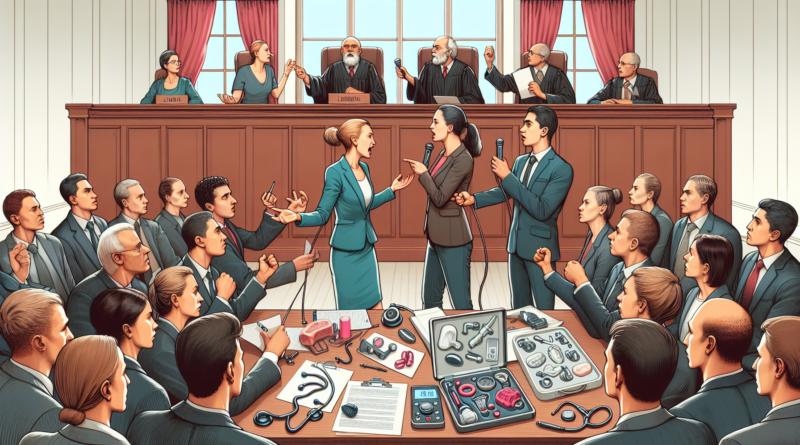Patent Disputes in Medical Devices
Patent disputes in the medical device industry are complex legal battles that revolve around the ownership and use of innovative technologies. These disputes often arise when one company believes another is infringing on its patented technology. The stakes are high, as medical devices are crucial for patient care and represent significant investments in research and development.
The Legal Framework
The legal framework governing patent disputes is intricate, involving national and international laws. In the United States, the U.S. Patent and Trademark Office (USPTO) plays a pivotal role in granting patents, while the courts handle infringement cases. Globally, the World Intellectual Property Organization (WIPO) provides guidelines and support for resolving cross-border patent issues.
Key Elements of Patent Disputes
1. **Patent Validity:** The first step in a dispute is often to challenge the validity of the patent in question. This involves examining whether the patent was rightfully granted based on novelty, non-obviousness, and usefulness.
2. **Infringement Analysis:** Determining whether a device infringes on a patent involves a detailed comparison of the patented claims and the accused product.
3. **Damages and Remedies:** If infringement is proven, the patent holder may seek damages, which can include lost profits, royalties, and sometimes enhanced damages for willful infringement.
Patent disputes can have a chilling effect on innovation. While patents are designed to protect inventors and encourage innovation by providing a temporary monopoly, disputes can lead to costly litigation and uncertainty. This can deter companies from investing in new technologies or entering the market with innovative products.
Strategies for Resolution
Resolving patent disputes often requires strategic negotiation and legal expertise. Companies may opt for alternative dispute resolution methods such as mediation or arbitration to avoid lengthy court battles. Licensing agreements can also be a viable solution, allowing the alleged infringer to use the patented technology in exchange for royalties.
Navigating Patent Disputes
Navigating patent disputes requires a deep understanding of both the legal landscape and the technical aspects of the medical devices involved. Companies should engage experienced legal counsel and consider all available options, from litigation to settlement, to protect their interests and foster innovation.
Several high-profile patent disputes have shaped the medical device industry. For instance, the legal battle between Boston Scientific and Edwards Lifesciences over heart valve technology highlighted the complexities of patent law and the significant financial implications of such disputes. These cases often set precedents and influence future patent litigation strategies.
Future Trends
As technology evolves, so too will the nature of patent disputes. Emerging fields such as digital health and personalized medicine present new challenges and opportunities for patent law. Companies must stay informed about legal trends and adapt their strategies to protect their innovations in a rapidly changing landscape.
Conclusion
Patent disputes in the medical device industry are a critical aspect of protecting innovation and ensuring fair competition. By understanding the legal framework and employing strategic resolution methods, companies can navigate these challenges effectively and continue to bring life-saving technologies to market.


